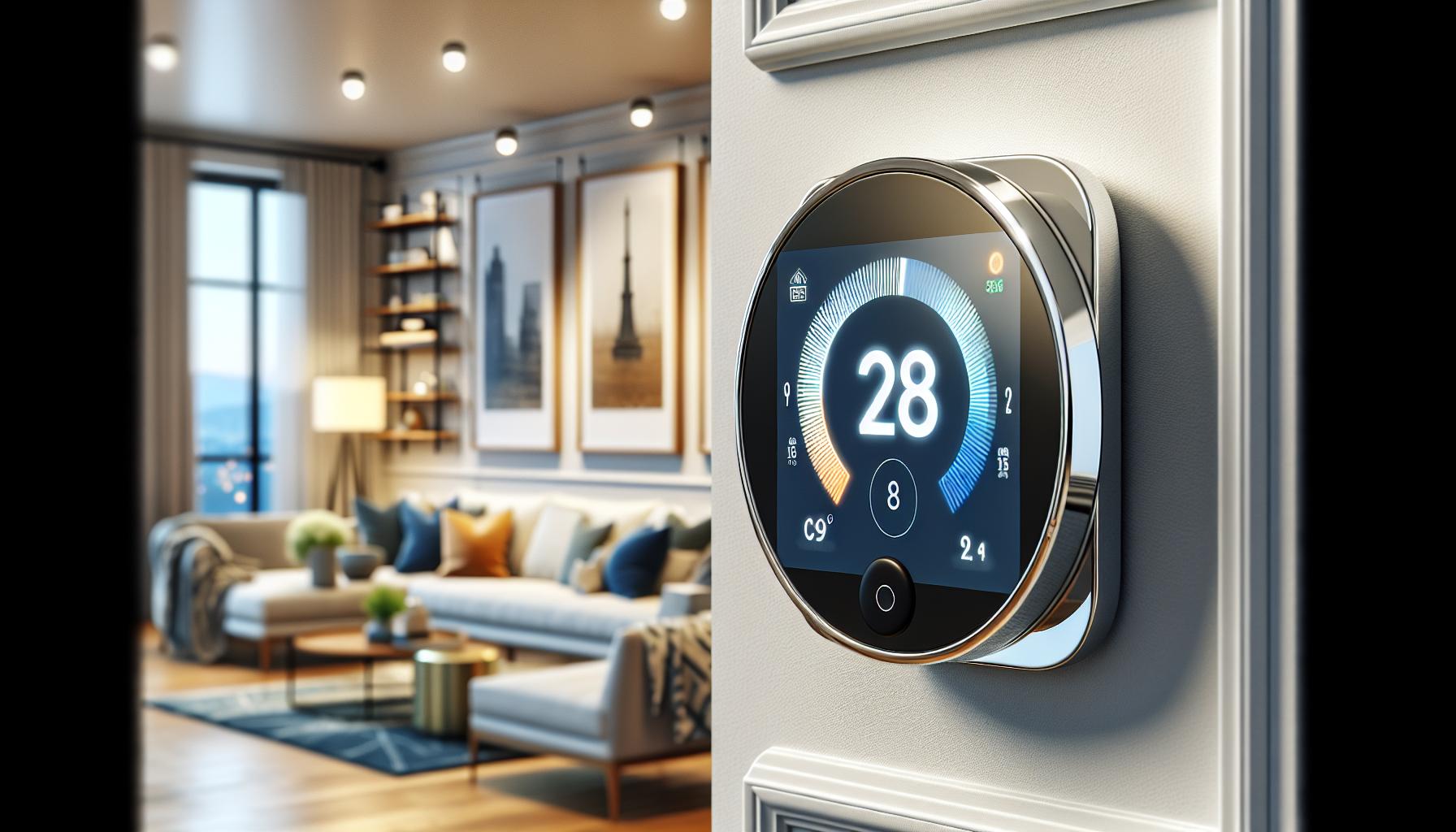In a world where your fridge can text you when you’re out of milk, the Internet of Things (IoT) isn’t just a techy buzzword—it’s a lifestyle. Imagine a universe where everyday objects communicate, making life smoother and a tad more entertaining. But how does this magic happen? It all boils down to four primary systems that work together like a well-rehearsed dance troupe, ensuring everything from smart homes to wearable tech operates seamlessly. A strong infrastructure target is essential to support the connectivity and data exchange that powers this interconnected world.
What Are the Four Primary Systems of IoT Technology?
IoT technology encompasses various systems that create a seamless network of connected devices. These systems streamline communication among objects, improving user experiences and overall efficiency. Four primary systems play crucial roles in this interconnectivity: device, network, data, and application.
Device systems consist of smart gadgets equipped with sensors, software, and connectivity features. These devices include smart thermostats, wearable fitness trackers, and security cameras, all designed to collect and transmit data. Network systems provide the infrastructure needed for data transfer. This infrastructure encompasses protocols such as Wi-Fi, Bluetooth, and cellular networks, enabling devices to communicate effectively.
Data systems handle the vast amounts of information generated by IoT devices. Big data analytics and cloud computing are essential components, allowing for storage, processing, and analysis of data in real time. With proper data management, valuable insights emerge, driving informed decision-making.
Application systems integrate the functionality of devices and data processing. User-friendly interfaces enable individuals to monitor and control their connected devices. Examples include mobile apps for smart home systems and dashboards for industrial IoT applications. These applications ensure that users interact effectively with their devices, enhancing the overall IoT experience.
Together, these four primary systems—device, network, data, and application—create a robust framework for the Internet of Things. This framework supports the ongoing evolution of smart technologies, ultimately transforming daily lives and industries.
The Four Primary Systems of IoT Technology

Four primary systems enable IoT technology, creating a seamless interconnected experience. Each system plays a crucial role in enhancing functionality and utility.
System 1: Sensors and Devices
What are the four primary systems of iot technology? Sensors and devices form the backbone of IoT technology. These gadgets, such as smart thermostats and fitness trackers, gather data from their environments. Equipped with sensors, they detect various inputs, including temperature and motion. The collected information gets transmitted in real-time, allowing for instant feedback. Examples include home security systems and smart appliances, which enhance convenience and security in daily life.
System 2: Connectivity
Connectivity bridges devices and networks, ensuring communication between them. Various protocols, like Wi-Fi, Bluetooth, and Zigbee, facilitate data transfer. A robust network infrastructure supports seamless interaction across devices. This interconnectedness enables smart devices to work together, sharing information and responding to commands. Furthermore, reliable connectivity also supports remote access, allowing users to control devices from anywhere.
System 3: Data Processing
Data processing systems handle the vast amounts of information generated by IoT devices. Through big data analytics and cloud computing, these systems enable efficient analysis and storage of data. Real-time processing allows for immediate insights and actions based on collected information. Robust data management ensures that users receive relevant updates promptly. This processing capability supports informed decision-making, enhancing the overall user experience.
System 4: User Interface
User interface systems provide the means for users to interact with IoT devices effectively. These interfaces can take various forms, including mobile apps and web dashboards. Clear, intuitive designs ensure users can monitor and manage their devices effortlessly. Customizable options enhance user engagement, tailoring experiences to individual preferences. Enhanced user interfaces contribute significantly to the convenience and functionality of IoT technology.
Applications of IoT Technology

IoT technology finds vast applications across multiple sectors. Smart homes exemplify how IoT enhances daily life, enabling homeowners to manage lighting, security, and temperature remotely. Energy management systems streamline utility usage, optimizing efficiency through real-time monitoring and control.
Healthcare benefits from IoT adoption, with wearable devices tracking vital signs and offering data for remote patient monitoring. Connected medical equipment, such as smart insulin pumps, provides accurate information for managing chronic conditions.
Manufacturing also harnesses IoT for enhanced efficiency. Smart factories use connected machinery to monitor performance metrics, predict maintenance needs, and minimize downtime. These systems improve productivity while fostering cost savings.
Transportation applications include smart logistics and fleet management. IoT devices track vehicle locations and monitor performance, resulting in optimized routes and reduced fuel consumption. Additionally, real-time traffic data enhances navigation, contributing to safer commutes.
Agriculture embraces IoT with precision farming practices. Sensors gather data about soil conditions, crop health, and weather patterns, allowing farmers to make informed decisions and maximize yields. Automated irrigation systems conserve water and improve resource management.
Retail environments use IoT to enhance customer experiences. Smart shelves track inventory levels and send alerts when restocking is necessary. Retailers analyze customer behavior data, allowing for tailored promotions and improved service offerings.
Finance integrates IoT to streamline operations and enhance security. Connected devices, such as point-of-sale terminals, provide real-time transaction data. Advanced fraud detection systems monitor network activity, improving safety for customers.
Across these domains, IoT technology drives innovation, efficiency, and improved user experiences, shaping how industries evolve and respond to consumer needs.
Future of IoT Technology

Emerging trends indicate significant advancements in IoT technology, focusing on enhanced machine learning and artificial intelligence integration. Analysts foresee growth in automation capabilities, positioning IoT as a critical player in yearly efficiency gains across various sectors.
Progress in device miniaturization brings about more capable and versatile sensors, enabling devices to become smarter and more energy-efficient. The evolution of network technologies, including 5G, supports faster data transmission, facilitating real-time communication between devices in densely populated environments.
Investments in edge computing are set to increase, approaching data processing closer to the source, which enhances speed and reduces latency. Organizations recognize the importance of cybersecurity in IoT ecosystems, prompting the development of more robust protection measures across devices and networks.
Sustainability also emerges as a priority, with IoT applications focusing on resource optimization in energy consumption and waste management. Innovations in agricultural technology facilitate precision farming, leading to smarter use of water and nutrients.
Collaboration between companies becomes more common, paving the way for interoperability among devices and platforms. The emphasis on user experience drives the creation of intuitive interfaces, allowing users to navigate complex ecosystems effortlessly.
Industry-specific solutions are expanding, addressing unique challenges in healthcare, transportation, and manufacturing. Healthcare wearable devices are seeing advancements, offering real-time health monitoring and enhanced patient outcomes.
Transportation systems increasingly adopt IoT for smart logistics and autonomous vehicles, streamlining operations and enhancing safety on the roads. Smart cities develop infrastructure, integrating IoT technology to enhance urban planning and improved quality of life.
Overall, IoT technology continues to advance, driving innovation and efficiency while shaping the future of numerous industries.
IoT technology
The four primary systems of IoT technology play a crucial role in creating a connected world. Each system—device, network, data, and application—contributes to a seamless interaction between users and their environment. As advancements in technology continue to emerge, these systems will evolve, enhancing automation and user experiences across various sectors.
With the ongoing integration of machine learning and artificial intelligence, the potential for IoT applications expands significantly. The focus on sustainability and cybersecurity further emphasizes the importance of these systems in addressing contemporary challenges. The future of IoT is bright as it drives innovation and efficiency, paving the way for smarter living and working environments.



